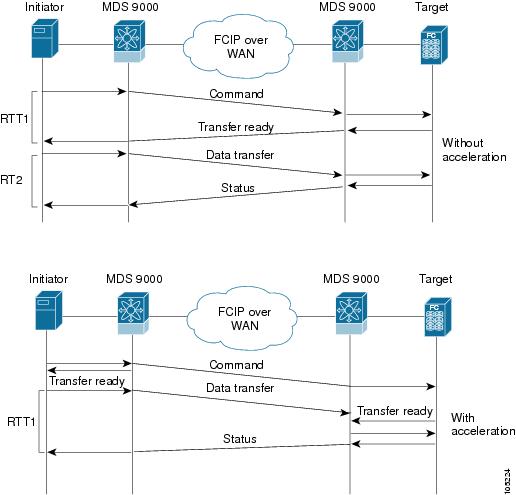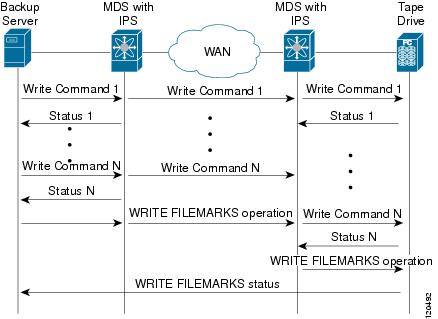SCSI Write Acceleration and Tape Acceleration
This appendix describes the concepts of SCSI write acceleration, tape acceleration, and compression.
SCSI Write Acceleration
The SCSI write acceleration feature enables you to significantly improve application write performance when storage traffic is routed over wide area networks using FCIP or Fibre Channel. When write acceleration is enabled, WAN throughput is maximized by minimizing the impact of WAN latency for write operations.
In Figure 1, the WRITE command without write acceleration requires two round-trip transfers (RTT), while the WRITE command with write acceleration only requires one RTT. The maximum sized Transfer Ready is sent from the host side of the FCIP or Fibre Channel link back to the host before the WRITE command reaches the target. This enables the host to start sending the write data without waiting for the long latency over the FCIP or Fibre Channel link of the WRITE command and Transfer Ready. It also eliminates the delay caused by multiple Transfer Readys needed for the exchange going over the FCIP or Fibre Channel link.

SCSI Tape Acceleration

At the tape end of the FCIP or Fibre Channel tunnel, another Cisco MDS switch buffers the command and data it has received. It then acts as a backup server to the tape drive by listening to a transfer ready from the tape drive before forwarding the data.

The Cisco NX-OS provides reliable data delivery across the WAN. While tape media errors during the read operation are returned to the restore server for error handling, the Cisco NX-OS software recovers from any other errors.
 Feedback
Feedback